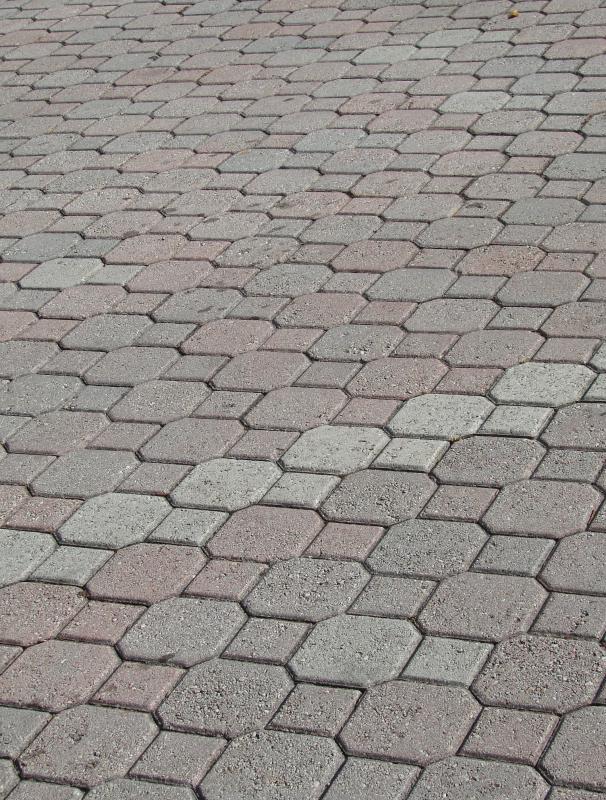At WiseGEEK, we're committed to delivering accurate, trustworthy information. Our expert-authored content is rigorously fact-checked and sourced from credible authorities. Discover how we uphold the highest standards in providing you with reliable knowledge.
What are the Best Tips for Laying Concrete Pavers?
Laying concrete pavers can be a successful do-it-yourself project by following a few of these best tips. Begin by laying the pavers out in the intended design to get an idea of how they will actually look. Spread a layer of small gravel beneath the sand base for better drainage, and keep the paver surface close to ground level for easier mowing. Pavers can be laid very close to each other or a space can be left for gravel, treated lumber, or wood chips. Concrete pavers can be spread wider to transition into natural surroundings, stacked for steps, or staggered for curves.
Before laying concrete pavers, it is best to arrange them in the desired pattern at the work site. Walk on the design from several directions to get a good look at it. Any changes to the pattern can easily be made without disturbing the finished work. Note any areas where the pavers will need to be cut, and acquire the necessary tools before beginning the work. This preliminary step will also determine the need for additional pavers.

Steps should be taken for future drainage, weed control, and surface smoothness when laying concrete pavers. A layer of pea-sized or crushed gravel should be placed beneath the sand base to promote good drainage. Some type of edging should be used in grassy areas to prevent future encroachment. Edging may also be installed to prevent the sand base from eroding during rain showers. After laying concrete pavers, sweep any leftover sand into the joints to keep the surface smooth and level.
Laying concrete pavers at ground level will allow a lawn mower to pass over them without causing damage to the blade or pavement. Placing the pavers below ground level can cause water to puddle during rain showers. This may also allow leaves, dirt, and other debris to collect on the pavement. In wooded areas, materials such as gravel, wood chips, and crushed stone may be used to fill gaps between the pavers for a more natural appearance. It is also possible to place strips of treated lumber between concrete pavers.
A unique appearance can be achieved by laying concrete pavers progressively farther apart from the center. This allows patio paving to gradually transition into the surrounding lawn area. This pattern can be followed until the pavers become stepping stones to a driveway or outbuilding. Concrete pavers may also be stacked on top of each other to create steps on slopes and terraces. To avoid cutting pavers for curves, offset them a slight bit to create a rounded zigzag appearance.
AS FEATURED ON:
AS FEATURED ON:











Discuss this Article
Post your comments